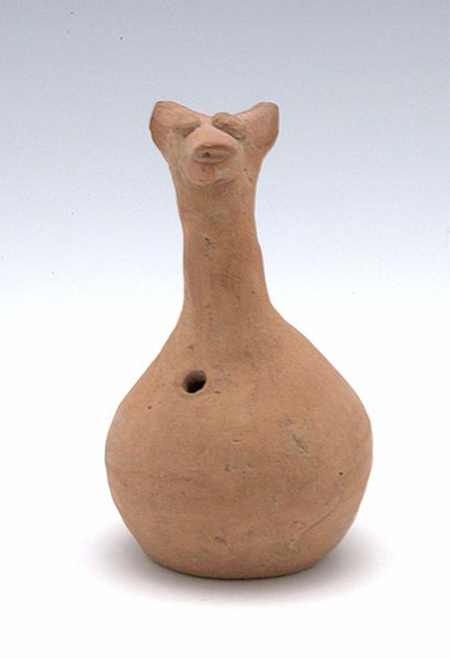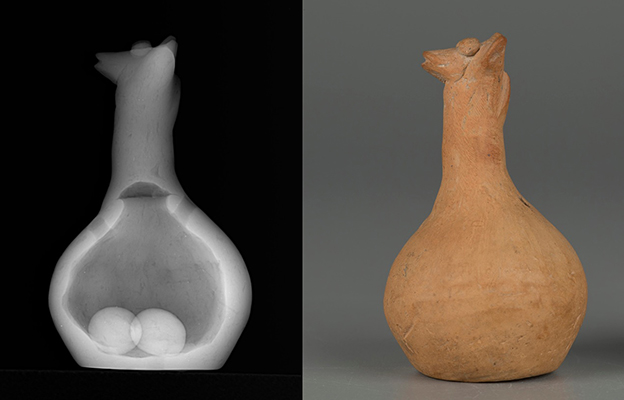The exhibition Prehistoric Pottery from Northwest China represents an exciting moment for digital experimentation at the Harvard Art Museums. For the first time, we’re using Bluetooth beacon technology inside the gallery to offer visitors access to a digital tool that accompanies the exhibition.
“We have a very strong Web presence, and this is a new and powerful way for us to connect visitors to our robust online content,” said Ian Callahan, technology support specialist for the museums’ Division of Digital Infrastructure and Emerging Technology.
Beacons, which are devices that broadcast signals to nearby smart devices, are embedded within the University Study Gallery to let those in the room access the digital tool; visitors just need to have a recent iPhone or Android device that is Bluetooth enabled, and that has the most recent version of the Chrome Internet browser installed. From anywhere in the gallery, visitors with this technology can use their devices to connect to the digital tool through a notification called the Physical Web.
This tool presents an additional layer of context for the exhibition. Featuring detailed maps, the tool illuminates the locations and dates of the prehistoric cultures represented by the ceramics on display. Viewers can also get a glimpse into how staff at the Straus Center for Conservation and Technical Studies examined and prepared the exhibition’s approximately 60 objects for display. Close-up photos and X-radiograph images of objects—such as a rattle in the form of a small animal, from the Qijia culture (2200–1500 BCE)—give clues as to how the objects were made. Elizabeth La Duc, objects conservation fellow at the Straus Center, spearheaded this section of the digital tool, with contributions from Katherine Eremin, the Patricia Cornwell Senior Conservation Scientist at the Straus. (La Duc and Yan Yang, curatorial assistant for the collection in the Division of Asian and Mediterranean Art, will give a related gallery talk on July 14 at 12:30pm.)
Although the new technology is an intriguing addition to the visitor experience, it is purposely un-obtrusive (the technology won’t give push notifications, for instance; users must access their devices before they can be directed to the digital tool). “It enhances the visitor experience instead of disrupting or distracting from the objects,” Callahan said.
The museums look forward to further experimentation with ways to enrich the visitor experience using the (still relatively new) Bluetooth beacon and Physical Web technology.
The digital tool will be accessible in the gallery throughout the run of the Prehistoric Pottery exhibition, which closes August 14. For more information about how to configure your phone so that you can access the tool, visit Google’s page about the Physical Web.
Prehistoric Pottery from Northwest China complements a course taught by Rowan Flad, the John E. Hudson Professor of Archaeology at Harvard University, and has been organized with Ling-yu Hung, the An Wang Postdoctoral Fellow at the Harvard Fairbank Center for Chinese Studies and assistant professor of anthropology at Indiana University in Bloomington.



